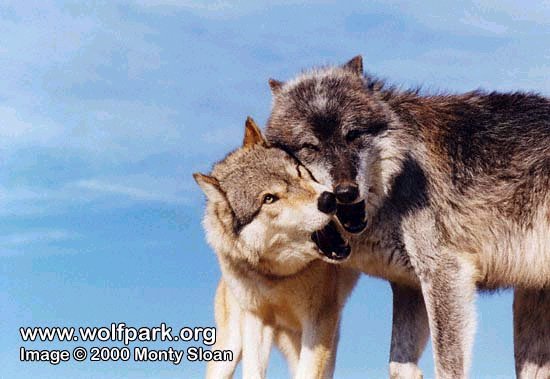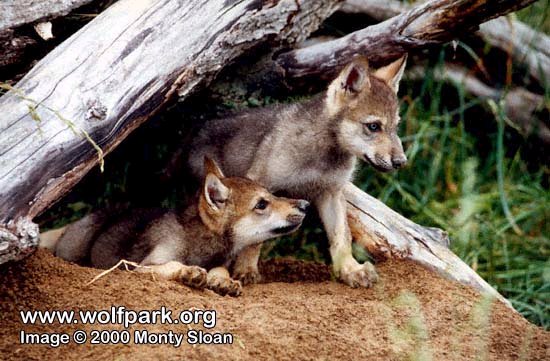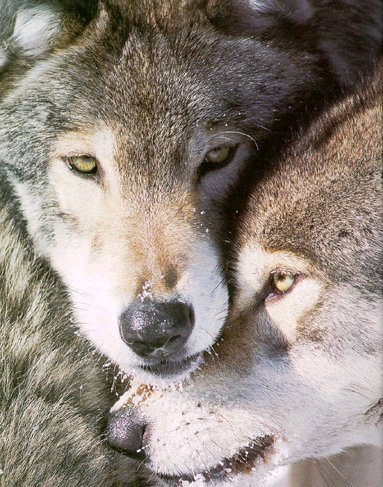|

~Wolf Reproduction, bonding and mating~
Mating season can be anywhere from January to April with the alpha female having only five to seven days of oestrus. During this time, the alpha pair may move out of the pack temporarily to prevent interruption from other pack members. Also the alpha pair is almost always the only pair to mate, to avoid over population. But there are sometimes the acception of the beta pair breeding.Although in rare cases a non-alpha pair will mate, according to one study, Twenty to forty percent of the packs contain at least two adult females produce two litters.
Usually the alpha male has dominance over the entire pack including the alpha female. But this not always true. During the mating season the alpha female takes total dominance even while the pups are still in the den. This is for the rest of the pack to know that she is the one to serve. She also decides were the den will be. With this in the packs mind, they go in search of food and bring it back to the den either for the hungry, laborious female or for the pups.
~Courtship and Bonding~
When the two are about to mate, they bond, sleeping close and touching each other more and more. They will approach each other making quiet whining sounds, mouth each others muzzles, touch noses, and bump there bodies together. There may be mutual grooming and nibbling of each other's coats and the two may walk pressed close together. The Male may bow to the female, toss and tilt his head, and lay his legs over her neck in what could only be described as a flirting manner. The two may even sleep side by side.
Whether humans realize it or not, the wolf is, in many ways, very very close to us. Copulation will than occur between the two wolves over a period of one or two days.
~Gestation Period~
Pups grow inside their mother for about 63 days before being born. At birth they weigh only one pound, and their eyes are closed. Pups grow quickly. About 12 to 15 days after they are born, they open their eyes. By two weeks of age, the pups can walk, and about a week after that, they may come out of the den for the first time. At first, they live only on milk from their mother.
~Dens~ Shortly before the pups are born, the alpha pair will go and seek out a den that is within the pack territory. Dens may be a deep riverbank hollow, a cleft between rocks, a hollow log, a space under an upturned tree or a space under a rock overhang. Sometimes wolves will use abandoned dens of other animals, such as bear dens or a beaver dam.
~Wolf Pups~
Pups are born completely blind and deaf (but have a keen sense if smell), depending on the their mother and other members of the pack. The whole pack takes care and raises the pups (non-breeding females produce milk and males compete to baby sit).Usually four to six pups are born together. This is called a litter, and the pups in a litter are called litter mates. Pups are born inside a den.
Wolf pups at this age may be preyed upon by Golden Eagles, Bear can also prey on young pups. There are several records of a number of adult wolves decoying bears away from their pups' den until they left.
~Stages of Development~
10 - 13 days: the eyes open
3 weeks: the milk teeth appear, they start to explore the den
4 - 5 weeks: short trips outside the den, begin to eat meat
6 weeks: moving up to a mile from the den (with adult wolf)
6 - 8 weeks: pups are weaned, traveling to rendezvous site.
12 weeks: begin to travel with the pack on hunts (with adult wolves)
15 - 28 weeks: milk teeth are replaced
7 - 8 months: begin to hunt with the pack 
|



